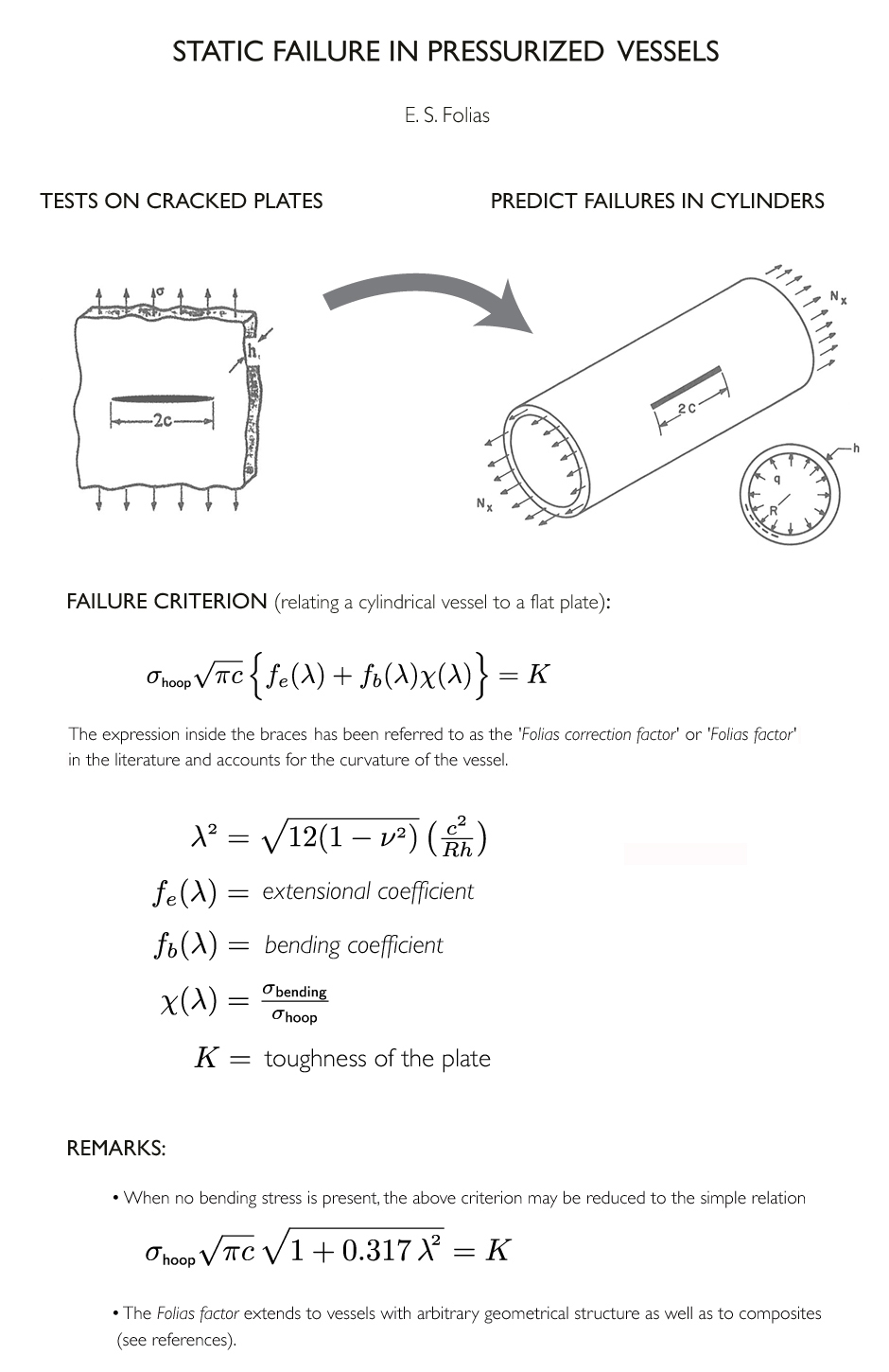Efthymios S. Folias
Professor of Mechanics & Mathematics (emeritus)
Department of Mathematics
University of Utah
Ph.D. Aeronautics (Solid Mechanics), California Institute of Technology, 1963
M.S. Mathematics, University of New Hampshire, 1960
B.S. Electrical Engineering, University of New Hampshire, 1959
Professor of Mechanics & Mathematics (emeritus)
Department of Mathematics
University of Utah
Ph.D. Aeronautics (Solid Mechanics), California Institute of Technology, 1963
M.S. Mathematics, University of New Hampshire, 1960
B.S. Electrical Engineering, University of New Hampshire, 1959


PRESSURE VESSEL DESIGN & THE FOLIAS FACTOR:
A thorough investigation was undertaken in order to assess the role that an initial curvature plays on the catastrophic failure of metal sheets possessing initial flaws. This extensive study of the subject has led to a series of publications from which we were ultimately able to derive a very general and reliable design criterion against failure that also incorporates a correction factor for plasticity. The criterion is presently used by ASTM and industry in order to predict catastrophic failures in pressurized vessels of an arbitrary shell geometry (e.g., cylindrical, spherical, conical, etc.) by knowing only material properties, type of loading, geometry of the structure, and geometry of the flaw. A comparison with experimental data available in the literature, as well as with experimental work carried out at the University of Utah, substantiates its validity and use. Such a criterion finds numerous applications to the field of pressure vessel technology (e.g., pipes, water heaters, airplanes, submarines, space station, nuclear reactors, rockets, missiles, etc.).
Because a plate is a special case of a shell, we were successful in establishing an appropriate correlation function relating the fracturing characteristics of a flat plate with those of an initially curved sheet. In experimental work on brittle fracture, for example, considerable time and money can be saved for one may now predict the response behavior of metal curved sheets and/or pressurized graphite/epoxy cylinders from experimental data performed on flat plates. Japanese and European designers were the first to capitalize on the practical advantages of this correlation function.
Because a plate is a special case of a shell, we were successful in establishing an appropriate correlation function relating the fracturing characteristics of a flat plate with those of an initially curved sheet. In experimental work on brittle fracture, for example, considerable time and money can be saved for one may now predict the response behavior of metal curved sheets and/or pressurized graphite/epoxy cylinders from experimental data performed on flat plates. Japanese and European designers were the first to capitalize on the practical advantages of this correlation function.
REFERENCES:
E.S. Folias, “Fracture in Pressure Vessels,” Chapter
21, Thin Shell Structures, edited by Y.C. Fung &
E.E. Schler, Prentice-Hall (1973) pp. 483-518. .pdf
E.S. Folias, “Fracture of Pressurized Metal and Graphite/Epoxy Cylinders for Applications to Pressure Vessel Design,” Transactions of the Sixth International Conference on Pressure Vessel Technology (1988). .pdf
E.S. Folias’ publications on the failure of pressurized vessels
E.S. Folias’ research statement
Folias Factor on Google
Folias Factor on Google Scholar
E.S. Folias, “Fracture of Pressurized Metal and Graphite/Epoxy Cylinders for Applications to Pressure Vessel Design,” Transactions of the Sixth International Conference on Pressure Vessel Technology (1988). .pdf
E.S. Folias’ publications on the failure of pressurized vessels
E.S. Folias’ research statement
Folias Factor on Google
Folias Factor on Google Scholar